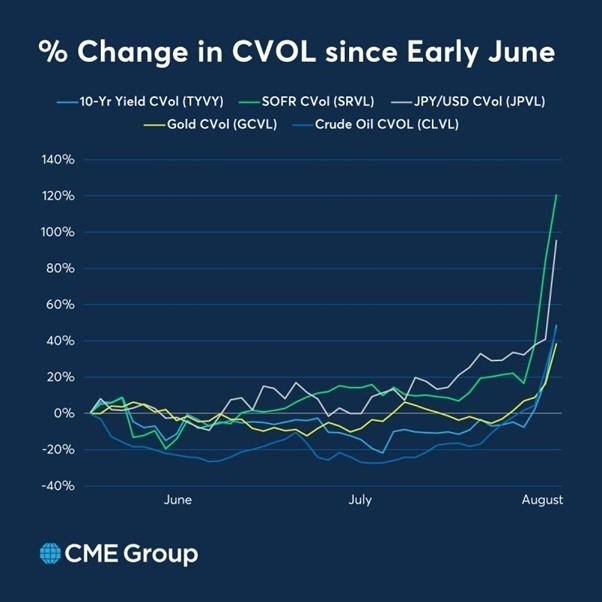Equity market meltdown poses intraday liquidity management questions — high time for answers

By Alex Knight, head of EMEA at Baton Systems
Recent events in equity markets have spotlighted major anxiety surrounding price volatility and the impact on pension savings. Yet, all this frantic selling overlooks an evergreen element underpinning the stability of the global financial system: liquidity resilience.
When markets experience extreme volatility, as we have seen over the past week, the ability of financial institutions to manage their liquidity is pushed to the limit. The desperate need to maintain liquidity to meet prudential obligations and for operational purposes forces firms to hold even higher cash buffers, putting additional pressure on already volatile markets. Responding to a drop in the value of their assets, many rush to further increase their already costly liquidity buffers.
The trouble is that during any major sell-off, the difficulty of selling assets at favourable prices becomes pronounced. With numerous sellers and few buyers, prices plummet, triggering investors to accept lower returns. Concurrently, borrowing becomes more expensive as prime brokers, wary of heightened market volatility, tighten their credit criteria. Hedge funds, reliant on credit, find it much harder to secure necessary funds, leading to a cascade of challenges.
Also, given the interconnected nature of global markets, a sell-off in one region can rapidly ripple across futures markets worldwide. The CME Group’s CVOL Volatility Index (see chart), a measure of how much the price of certain financial products is expected to fluctuate over a specific period, highlights a dramatic rise in volatility across multiple markets, particularly in overnight borrowing costs collateralised by treasury securities (SOFR markets).
Margin costs can also start to climb noticeably. The Japan Securities Clearing Corporation (JSCC) increased initial margin for long futures positions in the Nikkei 225 and Topix indexes by 32% and 39%, respectively, at the peak of the volatility. While traders with short positions in Japanese government bond futures saw margins jump by 43%. JSCC equity index margins increased between 60–80% over two days.
We also saw how speculation of an emergency Fed rate cut to curb the sell-off further spiked this volatility. When this sort of rumour ripples through the market, investment managers consider shifting their asset allocation from the US to more stable, lower-yield assets like European sovereign bonds, reducing potential returns but aiming for stability. However, any shift like this can also increase transaction costs, further affecting fund performance and funding status.
The issue is that when significant events like we have seen over the past week emerge, questions have to be raised around whether the current liquidity management processes and capabilities of financial institutions, which have been in place for decades, remain fit for purpose. Hampered by legacy technology and sluggish settlement cycles, post-trade inefficiencies become glaringly apparent and even more restrictive during periods of market stress. In such environments, even minor inaccuracies in balance sheets can become significant vulnerabilities. If an institution's liabilities outweigh its assets, the resulting funding strains can be severe.
This is where more robust and advanced intraday liquidity management must come into play. By more smartly using the information at their disposal, treasury managers could more accurately predict the timing of inbound liquidity demands and generate recommendations as to how outbound payments can be intelligently sequenced and scheduled based on priority and liquidity usage, reducing the risk of a potential liquidity shortfall and lowering funding costs as a result. In addition, a more sophisticated approach to liquidity management could also enable banks to swiftly identify early warning signs that something is amiss such as divergences in expected counterparty or market behaviour. Then crucially be able to quickly and proactively respond to those changes by sourcing alternative pockets of available liquidity or mitigating potential risks, based on higher quality, ideally real-time data.
The global equity sell-off has undoubtedly raised debate around whether there are vulnerabilities within our financial institutions' underlying infrastructure and reinforced the need for a refocus on how banks more effectively and proactively manage liquidity. The dramatic market downturn poses serious questions about whether relying on outdated infrastructure and reactive strategies remains a viable option. In this era of frequent bouts of market volatility, strong liquidity management is not just necessary — it is the cornerstone of financial stability and investor confidence.
As we look ahead, the lessons from this latest US job and unemployment-triggered sell-off must drive the industry towards smarter, more resilient, robust and responsive operational practices that can weather any future market storms. After all, it is not just pension pots that are affected by major market downturns – the plumbing underpinning the banks that are critical to the safe running of our global financial system can’t afford any liquidity leaks.
Found this useful?
Take a complimentary trial of the FOW Marketing Intelligence Platform – the comprehensive source of news and analysis across the buy- and sell- side.
Gain access to:
- A single source of in-depth news, insight and analysis across Asset Management, Securities Finance, Custody, Fund Services and Derivatives
- Our interactive database, optimized to enable you to summarise data and build graphs outlining market activity
- Exclusive whitepapers, supplements and industry analysis curated and published by Futures & Options World
- Breaking news, daily and weekly alerts on the markets most relevant to you




